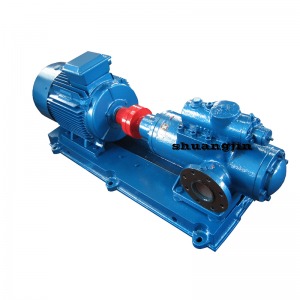Understanding screw pump pressure and range
In various industrial applications, Screw Pump Pressure have become a reliable choice for fluid transportation and management due to their unique design and efficient operation. One of the key characteristics of screw pumps is their pressure resistance, which significantly affects their performance in different environments.
What is the pressure of the screw pump?
Screw pump pressure refers to the force the pump exerts as it moves fluid through a system. This pressure is critical because it determines the pump's ability to handle a variety of fluids, including viscous liquids, slurries, and even certain gases. The pressure generated by a screw pump stems from its design, which typically contains two or more interlocking screws that form a sealed chamber. As the screws rotate, they draw in fluid and push it through the discharge port, creating pressure.

Screw pump pressure range
The pressure range of a screw pump can vary greatly depending on its design, size and application. Typically, screw pumps can operate at pressures ranging from a few bars to more than 100 bars, depending on the specific model and configuration. This versatility makes them suitable for a wide range of applications, from oil and gas extraction to chemical processing and food production
Screw pump pressure: The core of design and performance
The Screw Pump Pressure Range generates conveying pressure through the sealed cavity formed by interlocking screws. Its unique design enables it to efficiently handle viscous fluids, solid-containing slurries and sensitive media. Pressure value (unit: bar /MPa) is a key indicator for measuring the pump body's ability to overcome pipeline resistance and ensure stable delivery, directly affecting flow stability and system energy consumption.
Processing accuracy: The guarantee of pressure stability
OUR points out that the shape and position tolerance of the screw (such as pitch error ≤0.02mm) and the surface finish (Ra≤0.8μm) directly determine the leakage rate and pressure attenuation of the sealing cavity. The company adopts five-axis CNC machine tools and online detection technology to ensure that the pressure resistance performance and service life of each pump reach the leading level in the industry.
in conclusion
In summary, understanding the pressure of a screw pump and its range is essential to choosing the right pump for your application. Whether you need a pump for high-pressure applications or a pump that can handle viscous fluids, our extensive product line can meet your specific needs.
We continue to lead the industry with innovative solutions and invite you to explore our products and learn how our progressive cavity pumps can improve your operational efficiency. For more information, visit our website or contact our team of experts today.
Post time: Jul-16-2025
